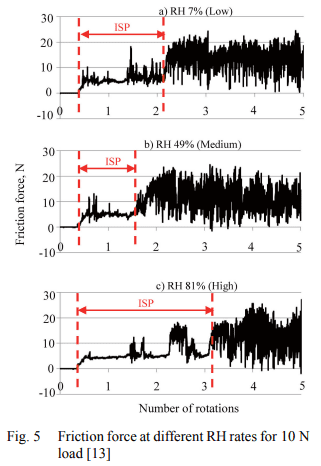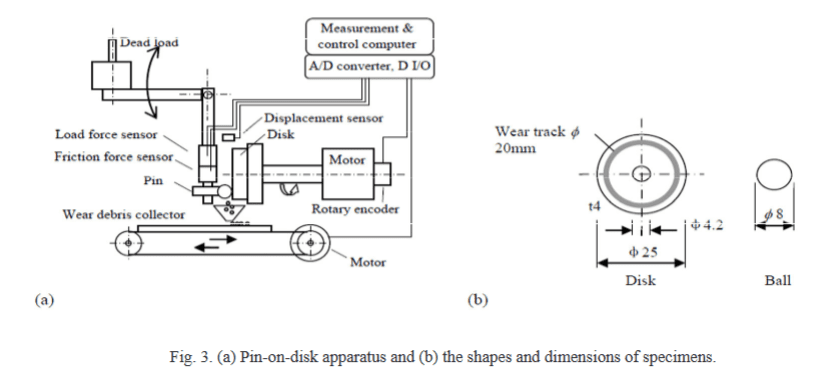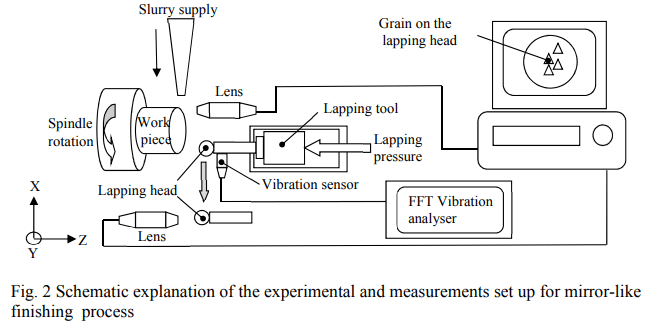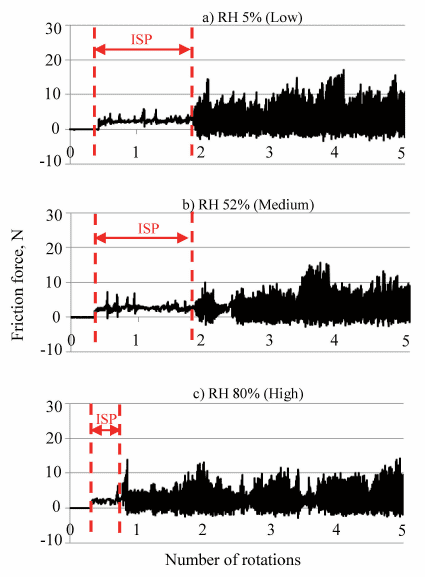Title: Analysis of Humidity Effects on Early Stage of Sliding
Abstract:
The influences caused by differences in relative humidity (RH) on the early stage of dry sliding were studied using a horizontal ball-on-disc tribotester equipped with air-humidity controller. The ball displacement perpendicular to sliding surface and friction force during the initial stage resulted in different consequences with different percentage of RH. The middle rate of RH 49% showed a contradictory behavior with the common sense known that friction force of sliding decreases with increment of RH. Friction force of sliding can be dominated by water meniscus and water viscosity as well as local solid-solid contact in atmosphere at certain rate of RH.
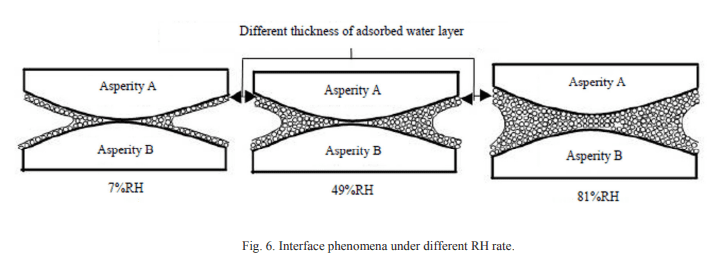
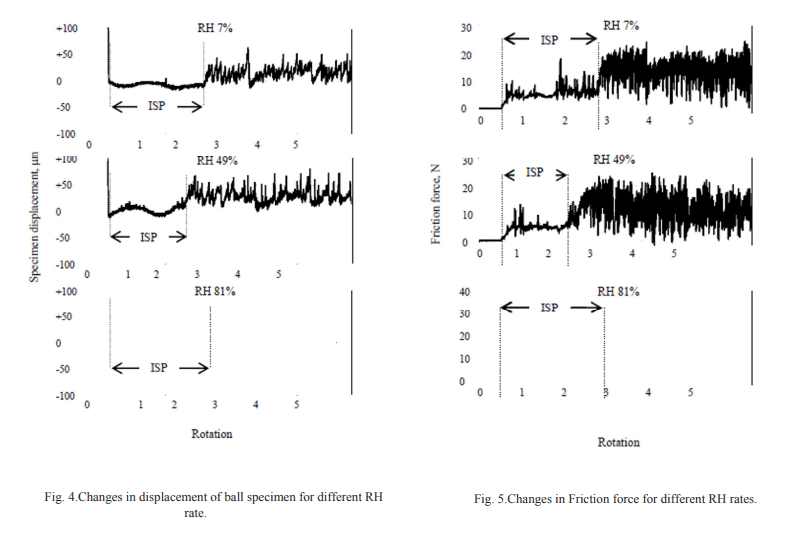
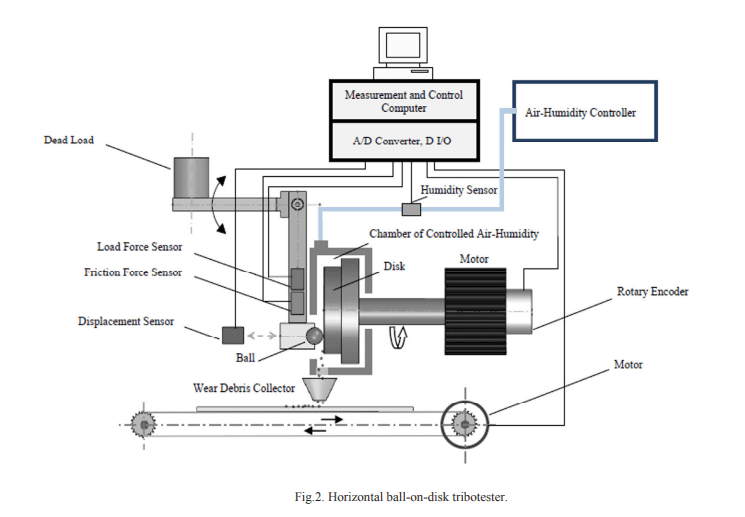

Title: Analytical Method for Temporal Changes in Repeated Sliding Phenomena
Abstract:
Understanding the sliding phenomena based on fundamental mechanisms is indispensable to improve the stability and expected life time of sliding parts which work in industrial field. In this paper, adhesive wear in a repeated sliding system was analyzed with a newly devised pin-on-disk apparatus. The analysis on time series data showed some correlational relationship between wear particle sizes and specimen displacement perpendicular to the sliding surface.
Title: Influences of trace water in a hydrogen environment on the tribological properties of pure iron
Abstract:
The authors have clarified that trace impurities such as water and oxygen inevitably contained in a hydrogen environment influence friction and wear of metallic materials substantially and even often govern them. In this study, an experimental technique was devised to enable sliding tests in a hydrogen environment which contains controlled concentration of water and virtually no oxygen as impurities. By comparing data of Fe sliding tests between this study and our previous studies, the influences of water and oxygen were understood separately. Water without oxygen as impurity in a hydrogen environment decreased wear of pure Fe while oxygen in additional to water increased the wear. Sliding of pure Fe consumed water when a hydrogen environment contained only water while it produced water and consumed oxygen when the environment contained both water and oxygen. The number of water molecules consumed by sliding in a hydrogen environment with water more than 5,000 ppb and without oxygen was larger than the estimated number of nascent Fe atoms by sliding. This suggests that multi-layer adsorption of water molecules decreased the wear of pure Fe.
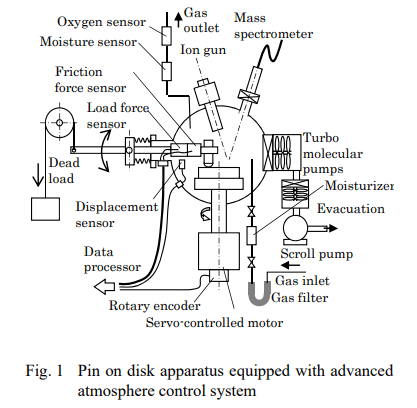
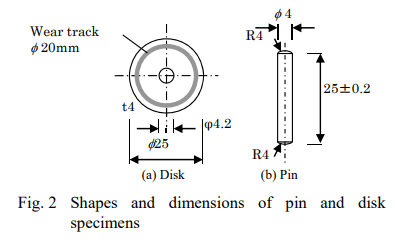

Title: An Investigation of Lapping Characteristics for Mirror-Like Finish Using a Lathe With Linear Motor
Abstract:
Lapping is possible to produce excellent surface finish with higher geometrical form. Additionally, automated lapping process is perfectly suited with today’s industry requirements and also economically advantage over other manufacturing processes. This research is devoted to study the characteristics of the lapping process for mirror-like surface finishing by using the linear motor lathe. In the process of mirror-like finish, various factors that effect on rate of material removal, limit surface roughness and geometrical form improvement were examined on low, medium and high hardness materials by series of experiments. The conclusion shows that active grain characteristics, hardness ratio, lapping pressure, lapping speed, residual stress and chatter vibration on the work surfaces all have influenced on the mirror-like surface finishing process.
Title: Objective and Combinational Analysis of Multiple Kinds of Data Obtained from Severe-Mild Wear Transition
Abstract:
The authors have been developing objective and combinational analysis method for multiple kinds of data obtained by a repeated sliding test performed with a pin-on-disk apparatus to clarify the wear mechanisms. The developed analysis method successfully showed the growth rate and the size of adhered substances on the sliding surface for adhesive wear mechanism. In this paper, the developed method was applied for analyzing chronological changes in severe-mild wear forms transition to understand the phenomena more quantitatively. Friction force, pin specimen displacement perpendicular to the slid surface and electrical contact resistance between pin and disk specimens were employed as the multiple kinds of data. The devised analysis showed that the formation of a plateau with around 25 μm height on the slid surface is a key factor for the transition.
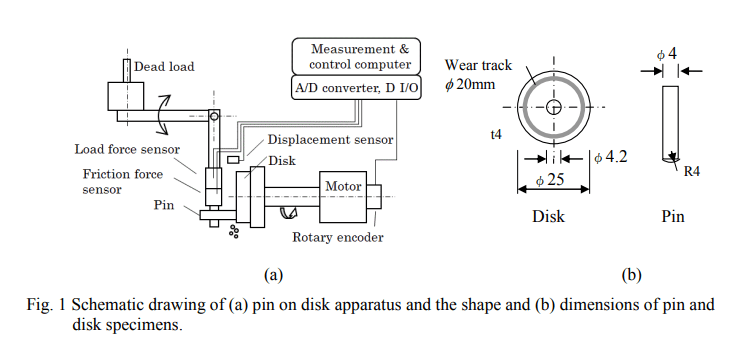

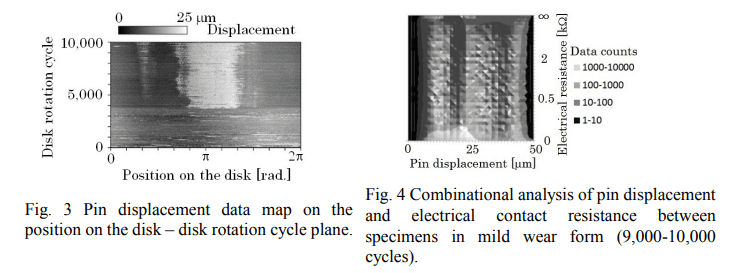

Title: Analytical study on the growth and transfer of adhesive substances generated on the surface in the early stage of sliding
Abstract:
This study is intended to produce reliable quantitative information about adhesive wear phenomena of metallic materials in the early stage of dry sliding. The outcome of this study will contribute to the refinement of the physical model of a wear mechanism. A devised technical method was employed in the study to enable data acquisition linked with the position of measurement on the specimen and objective combinational analyses of plural kinds of tribological data. Quantitative analyses on the relationship between friction force and specimen displacement perpendicular to the sliding surface was carried out. Data analyses on the self-mated dry sliding of austenitic stainless steel clarified the existence of several elemental processes of adhesive mechanism with quantitative parameters such as the growth rate and the size of adhesive substances generated at the interface between sliding members. The influences of the relative humidity (RH) in an atmospheric air on the numerical parameters were revealed as well and they were interpreted into the physical model of the adhesive wear mechanism.
Title: Quantitative Estimation of Adsorbed Water Layer on Austenitic Stainless Steel
Abstract:
A study was carried out to estimate the thickness of the adsorbed water layer on the surface of austenitic stainless steel (JIS SUS316) in different atmospheric humidity conditions. The purpose of the study is to have a quantitative data on water adsorption that has influences on the tribological phenomena. The mass of stainless-steel plate was determined by the weighting method as a function of the relative humidity (RH) in ambient atmospheric air. An experimental device consisting of atmospheric humidity controller and high sensitivity analytical balance with affixed airtight chamber was used for the purpose of the study. The result of water adsorption progression on SUS316 surface has been discussed and schematically demonstrated. It is clarified that the thickness of adsorbed water is significantly large to influence the tribological properties as demonstrated in a schematic model of the interface state of pin-on-disk prior to contact in high RH.


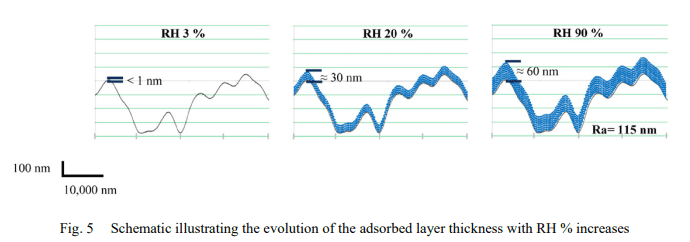

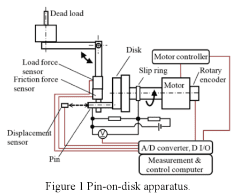
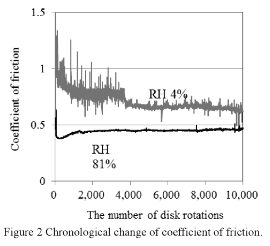
Title: Severe-mild wear transition at different relative humidity rates
Abstract:
Severe-mild wear forms transition in self-mated sliding of pure Fe was studied in normal atmospheric air and the influence of relative humidity (RH) rates was discussed. The period of the severe wear form before the transition was not recognized in high RH rate environment while that had certain length in low RH rate. The influence of RH rate in atmospheric air on the transition was discussed with consideration on adsorbed water layer on the metallic surface.
Title: Analysis on the Mechanism of Humidity to Influence the Very Early Stage of Sliding under Different Load
Abstract:
A study was carried out on the influences of atmospheric humidity in the very early stage of sliding for austenitic stainless steel (JIS SUS316). Pin-on-disk tests were conducted under different rates of relative humidity (RH). A relatively low magnitude of applied load to lessen the influences of mechanical effect was employed for emphasizing the humidity effect on tribological phenomena. The results of the current study were compared with our previous study results obtained at higher magnitude of applied load. The comparison suggested different mechanisms of adsorbed water layer exert influences on the tribological phenomena in the very early stage of the sliding when applied load was changed.

